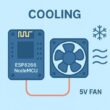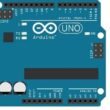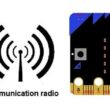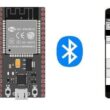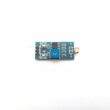GPS Trackers connected to IoT with ESP32 and GPS NEO-6M
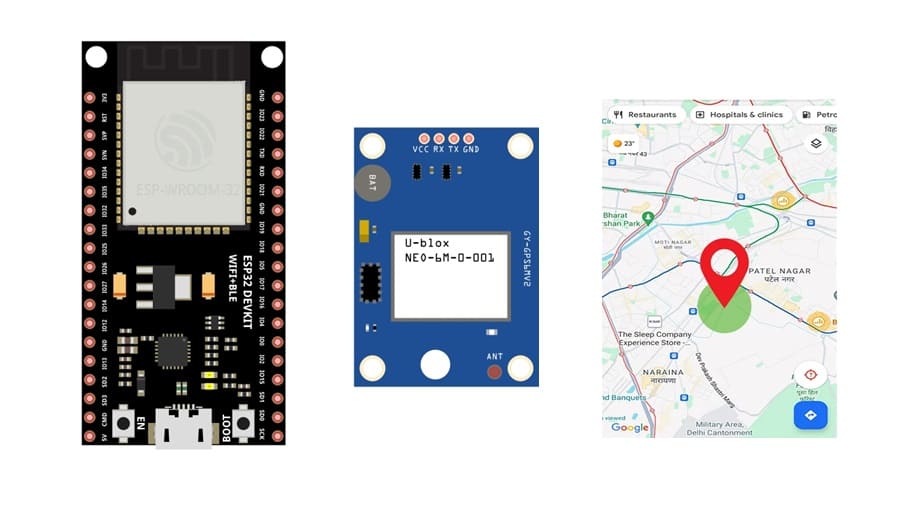
Tutorial plan
1- Presentation of GPS Trackers Connected to IoT
2- Components Needed to realize GPS Trackers with ESP32
3- Circuit Setup
4- Programming ESP32 with Micropython
Presentation of GPS Trackers Connected to IoT
GPS Trackers Connected to IoT represent a powerful fusion of technologies designed to provide real-time location tracking along with advanced data analytics and automation.
What Are GPS Trackers Connected to IoT ?
GPS Trackers: Devices that use Global Positioning System (GPS) technology to determine the exact location of an object or individual.
IoT Integration: These devices are connected to the Internet of Things (IoT) ecosystem, allowing them to communicate data to the cloud or central systems in real time.
How GPS Trackers Work in IoT Systems
Location Detection: GPS receivers in the tracker determine the location using satellite signals.
Data Collection: Additional sensors can capture other metrics like temperature, humidity, speed, or altitude.
Data Transmission: Using IoT connectivity protocols (Wi-Fi, 4G/5G, LoRaWAN, NB-IoT), the data is sent to the cloud or centralized databases.
Data Processing: Cloud platforms or edge devices analyze the data to extract actionable insights.
User Access: Users interact with the system through apps, web dashboards, or APIs for real-time monitoring and alerts.
Applications of IoT-Enabled GPS Trackers
Transportation & Logistics:
Real-time vehicle tracking and route optimization.
Monitoring goods in transit, including temperature-sensitive items.
Healthcare:
Tracking ambulances or mobile medical units.
Wearable devices for patient monitoring.
Agriculture:
Livestock tracking in large pastures.
Monitoring agricultural equipment movement.
Smart Cities:
Tracking public transportation systems.
Managing waste collection vehicles.
Wildlife Conservation:
Monitoring animal migration and habitats.
Anti-poaching efforts with real-time alerts.
Personal Use:
Devices for kids, pets, and elderly safety.
Fitness trackers with location capabilities.
Components Needed to realize GPS Trackers with ESP32
ESP32 Development Board
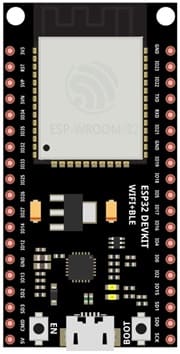
Acts as the microcontroller for managing data from the GPS module and displaying it on the SSD1306.
GPS Module: NEO-6M
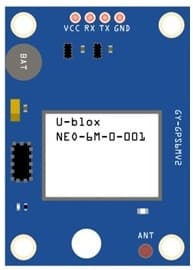
Provides real-time GPS location data (latitude, longitude, altitude, time, etc.).
SSD1306 OLED Display
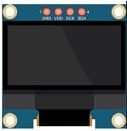
Displays location data (e.g., latitude and longitude) or status information.
Connecting Wires

Jumper wires or appropriate connectors to link components.
Breadboard
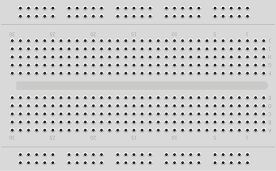
MQTT
For prototyping or assembling the components.
MQTT is a lightweight, publish/subscribe (pub/sub) messaging protocol designed for constrained devices and low-bandwidth, high-latency, or unreliable networks.
Ideal for IoT (Internet of Things) applications due to its efficiency and low overhead.
Circuit Setup
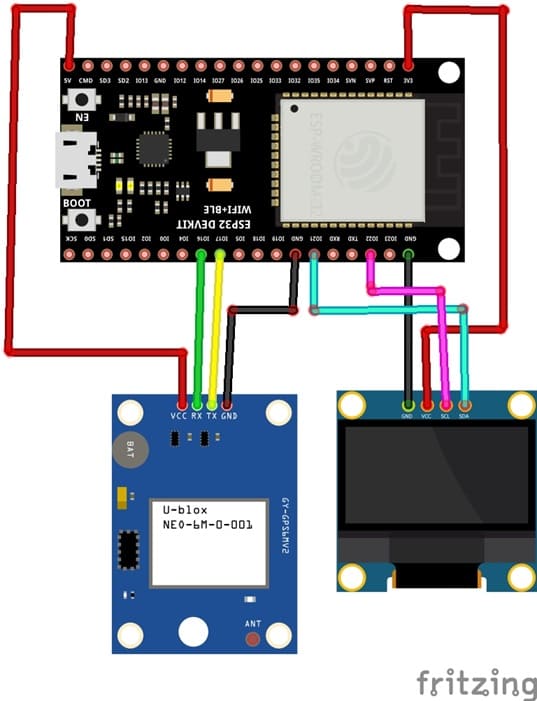
ESP32 to NEO-6M GPS Module
VCC (NEO-6M) → 3.3V or 5V (ESP32)
GND (NEO-6M) → GND (ESP32)
TX (NEO-6M) → RX (ESP32) (GPIO17)
RX (NEO-6M) → TX (ESP32) (GPIO16)
2. ESP32 to SSD1306 OLED Display (I2C)
VCC (SSD1306) → 3.3V (ESP32)
GND (SSD1306) → GND (ESP32)
SCL (SSD1306) → GPIO22 (ESP32) (Default I2C clock pin)
SDA (SSD1306) → GPIO21 (ESP32) (Default I2C data pin)
Workflow
1- GPS Data Parsing
The NEO-6M module sends raw GPS data over UART. The TinyGPS++ library decodes this into human-readable format.
2- Display on OLED
Latitude and longitude are shown in real time on the SSD1306 OLED display.
3- Send Data to MQTT
Encoded as a JSON payload and sent to the MQTT topic.
4- Visualize Data
Use MQTT clients (e.g., MQTT Explorer) or dashboards like ThingsBoard to monitor live GPS updates.
Programming ESP32 with Micropython
|
1 2 3 4 5 6 7 8 9 10 11 12 13 14 15 16 17 18 19 20 21 22 23 24 25 26 27 28 29 30 31 32 33 34 35 36 37 38 39 40 41 42 43 44 45 46 47 48 49 50 51 52 53 54 55 56 57 58 59 60 61 62 63 64 65 66 67 68 69 70 71 |
from machine import UART, Pin, SPI,I2C from micropyGPS import MicropyGPS import utime import ssd1306 import network import nmea from umqtt.robust import MQTTClient ubidotsToken = "***********************" clientID = "RANDOM-ALPHA-NUMERIC-NAME_OR_IMEI DEVICE ID" client = MQTTClient("clientID", "industrial.api.ubidots.com", 1883, user = ubidotsToken, password = ubidotsToken) WiFi_SSID = "************" WiFi_PASS = "************" def do_connect(): wlan = network.WLAN(network.STA_IF) wlan.active(True) if not wlan.isconnected(): print('connecting to network...') wlan.connect(WiFi_SSID, WiFi_PASS) while not wlan.isconnected(): pass print('network config:', wlan.ifconfig()) do_connect() i2c = I2C(-1, scl=Pin(22), sda=Pin(21)) oled_width = 128 oled_height = 64 oled = ssd1306.SSD1306_I2C(oled_width, oled_height, i2c) oled.text('Carte', 0, 0) # Afficher les deux mots '' oled.text('ESP32', 0, 10) oled.show() uart = UART(2, 9600) now = utime.ticks_ms() sentence = '' state = '' my_nmea = nmea.nmea(debug=1) while 1: while uart.any(): b = uart.read() my_nmea.parse(b) if utime.ticks_diff(utime.ticks_ms(), now) > 5000: now = utime.ticks_ms() print('{} {}'.format( my_nmea.latitude, my_nmea.longitude)) client.connect() lat = my_nmea.latitude lng = my_nmea.longitude var = 1.5 msg = b'{"location": {"value":%s, "context":{"lat":%s, "lng":%s}}}' % (var, lat, lng) print(msg) client.publish(b"/v1.6/devices/ESP32", msg)#envoi de la position du GPS vers le cloud Ubidots IoT oled.fill(0) y = 0 dy = 10 oled.text("Lat:{}".format(my_nmea.latitude), 0, y) y += dy oled.text("Lon:{}".format(my_nmea.longitude), 0, y) oled.show() |



















